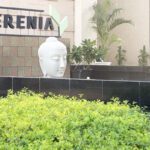Sustainability can no longer just be a buzzword in today’s world— it has to become a way of life. As environmental consciousness grows, businesses and individuals are striving to diminish their carbon footprint. Co-working spaces are an area where sustainability practices, which aim to minimize environmental impact, are noticeable.
Serenia, IHDP’s coworking space in Noida, is leading the way in sustainable co-working. By implementing energy-efficient measures, utilising renewable energy sources, and educating and engaging its members, Serenia has created a sustainable workspace that sets an example for the industry.
In this blog, we explore the significance of sustainable coworking and how Serenia is at the forefront of this movement.
Carbon Footprint Challenge at Co-working Spaces
The popularity of co-working spaces has grown considerably in recent times. These collaborative work environments offer flexibility, cost-efficiency, and a diverse professional community. However, they also come with energy consumption and environmental challenges.
Traditional office spaces are often energy-inefficient, and co-working spaces share this drawback. The persistent need for lighting, heating, cooling, and electronic devices can result in a considerable carbon footprint. This poses a serious environmental concern that affects the health of our planet.
Steps Towards Carbon Neutrality in Coworking Spaces
Achieving carbon neutrality in coworking spaces involves a multifaceted approach that focuses on minimizing carbon emissions. Here are the steps toward carbon neutrality in coworking spaces:
Energy-Efficient Buildings
Coworking spaces are adopting sustainable building designs. They use energy-efficient lighting, heating, and cooling systems to reduce energy consumption.
Waste Reduction
Sustainable co-working spaces implement recycling programs and encourage members to reduce waste by using reusable cups, plates, and utensils.
Embracing Remote Work Culture
Shared workspaces are embracing a remote work culture to minimise their carbon footprints. This shift not only reduces environmental impact but also aligns with the changing dynamics of the modern workforce.
Green Certifications
Coworking spaces are pursuing certifications like LEED (Leadership in Energy and Environmental Design) to showcase their commitment to sustainability.
Sustainability Education
Many coworking spaces arrange resources and workshops to educate members about sustainable practices, encouraging them to make eco-friendly choices in their work lives.
Carbon Offsetting
Co-working spaces are increasingly investing in carbon offset programs to balance out their carbon emissions. These programs fund initiatives like tree planting or renewable energy projects to negate the carbon impact.
Benefits of Carbon-Neutral Co-working Spaces
Carbon-neutral co-working spaces offer a range of benefits, both for the environment and the occupants of these spaces. Here are some of the key advantages:
Reduced Costs
Sustainable practices often lead to lower energy and resource utilisation costs, saving both the co-working space operator and its members money.
Healthier Work Environment
Improved air quality, natural lighting, and greenery contribute to a healthier and more productive workspace.
Enhanced Reputation
Businesses and professionals can enhance their own reputation by associating with sustainable shared workspaces.
Community Building
Sustainability initiatives often foster a sense of community among coworking members, as they work together towards a common goal.
Serenia’s Efforts towards Sustainable Co-working and Carbon Neutrality
Serenia, IHDP’s coworking space in Noida, is making waves in the world of sustainable co-working. As businesses and individuals become increasingly conscious of their environmental impact, Serenia has taken the lead in setting up sustainable co-working that ensures carbon neutrality at its shared workspaces.
Biophilic Workspace Design
Serenia enhances well-being, productivity, and sustainability through its biophilic design. Biophilic designs integrate natural elements into the building architecture. This kind of design brings nature inside, optimizes natural light, and conserves energy. The Serenia workspace includes gardens on rooftops and plants indoors for improved aesthetics and air quality.
Energy Efficient Building Design
In 2014, IHDP was recognized by the CII with the National Energy Management Award 2014 for being an ‘excellent energy-efficient unit’. IHDP Business Park also boasts of a 3-star rating in terms of energy performance. From LED lighting to energy-efficient practices of cooling, the IT park makes every effort to minimise energy waste.
Waste Reduction Practice at Workplace
At Serenia, comprehensive waste reduction strategies are in place. Recycling programs are actively promoted, and members are motivated to minimize waste by utilizing reusable cups, plates, and utensils. Through these efforts, Serenia is actively working to decrease environmental impact, particularly by reducing single-use plastics and encouraging responsible waste disposal.
Wrap-up
Achieving carbon neutrality is a shared responsibility, and co-working spaces are stepping up to the challenge. By embracing biophilic design and implementing green and energy-efficient practices, Serenia has created a more eco-conscious and responsible work environment for its members.
Serenia’s sustainable coworking approach benefits everyone involved. Reduced costs, a healthier work environment, and an enhanced reputation are just some of the rewards. Businesses and professionals looking to make an impact while pursuing their goals find Serenia to be their ideal workspace choice.




